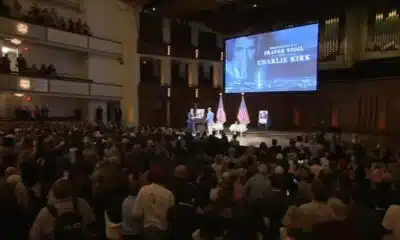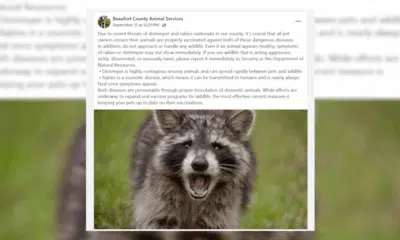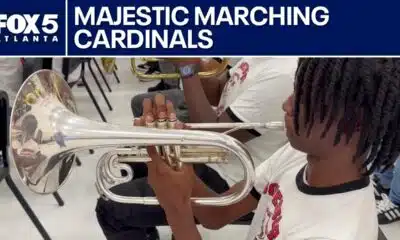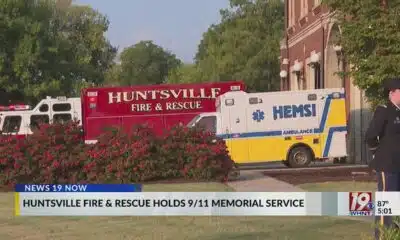News from the South - West Virginia News Feed
Health groups urge insurers to cover COVID-19 shots for pregnant women
Health groups urge insurers to cover COVID-19 shots for pregnant women
by Nada Hassanein, West Virginia Watch
June 17, 2025
The American College of Obstetricians and Gynecologists is urging insurers to continue covering vaccinations during pregnancy in an open letter signed by 30 prominent professional health organizations.
Pregnant patients and their infants are vulnerable to complications from COVID-19. In the letter to payers and insurance companies released this week, ACOG stressed the safety and efficacy of COVID-19 vaccinations and how they protect babies and pregnant people. It was signed by prominent professional groups including the American College of Physicians, Infectious Diseases Society of America and the American Public Health Association.
The letter follows U.S. Department of Health and Human Services Secretary Robert F. Kennedy Jr.’s decision to eliminate the recommendation for COVID-19 vaccinations for healthy children and healthy pregnant patients, sidestepping an established decision process by scientists. Kennedy, who has made false claims questioning vaccine safety, earlier this week fired all 17 experts on the federal vaccine advisory committee panel, replacing them with eight new members, four of whom have spoken out against vaccines.
The Trump administration’s moves have alarmed health experts, who worry about coverage and access to the shot amid the agency’s dismissal of science.
“We are deeply concerned about the recently adopted HHS policy to no longer recommend COVID-19 vaccination during pregnancy,” the letter reads. “Given the historic gaps in research, investment, and support for women’s health, it is essential that all aspects of obstetric and gynecologic care — including COVID-19 vaccination — be grounded in the best available scientific evidence.
Studies have shown babies born following a COVID-19 infection during pregnancy have a higher risk of low birth weights, stillbirth and respiratory distress, and data demonstrates the safety and effectiveness of COVID-19 vaccination during pregnancy.
Pregnant women who contract COVID-19 are also at higher risk of complications such as blood clots, are more likely to be hospitalized in intensive care units or to need ventilators, and are at a higher risk of death, the letter notes.
Payers should make the vaccine available to “pregnant people without undue utilization management or cost-sharing requirements,” the letter reads. Without insurance, a Pfizer or Moderna COVID-19 shot can cost roughly $140 for adults.
Following the recommendation rollback, public health officials in some states have emphasized their support of COVID-19 vaccines.
The Wisconsin Department of Health Services, for example, said it “continues to recommend the current COVID-19 vaccine during pregnancy and for every person 6 months and older,” noting that newborns “depend on maternal antibodies from the vaccine for protection.” Wisconsin Medicaid will also continue to cover the shot, the department said in a media release.
Officials in Georgia also said they expect continued coverage of the shot.
In Washington, a spokesperson for the state health agency told local media that the department is advising pregnant people to speak with their provider “to determine if receiving a COVID-19 vaccine is best for them.”
During this year’s legislative sessions, at least seven states introduced legislation aiming to ban or limit mRNA vaccines. Instead of using a weakened or dead version of the actual virus to stimulate an immune response, mRNA vaccines use a genetic code created in a laboratory to tell the body’s cells to produce a protein that triggers an immune response. The Pfizer-BioNTech and the Moderna COVID-19 vaccines use mRNA technology.
“The COVID vaccines were a remarkable scientific accomplishment, and they remain the best tool that we have to prevent severe outcomes associated with COVID infection,” Dr. Steven J. Fleischman, ACOG president, wrote in a statement. “Ob-gyns know that COVID infection during pregnancy can be incredibly dangerous for our pregnant patients — and we know that the vaccine can protect both them and their infants after birth.”
When patients are “forced to pay out of pocket, or to cover high cost sharing,” he wrote, “they are less likely to be able to protect themselves, their families, and their communities.”
Stateline reporter Nada Hassanein can be reached at nhassanein@stateline.org.
GET THE MORNING HEADLINES.
West Virginia Watch is part of States Newsroom, a nonprofit news network supported by grants and a coalition of donors as a 501c(3) public charity. West Virginia Watch maintains editorial independence. Contact Editor Leann Ray for questions: info@westvirginiawatch.com.
The post Health groups urge insurers to cover COVID-19 shots for pregnant women appeared first on westvirginiawatch.com
Note: The following A.I. based commentary is not part of the original article, reproduced above, but is offered in the hopes that it will promote greater media literacy and critical thinking, by making any potential bias more visible to the reader –Staff Editor.
Political Bias Rating: Center-Left
This article presents a fact-based, pro-science stance that criticizes recent federal decisions to roll back COVID-19 vaccine recommendations for pregnant individuals and children. While it largely reports on the response of medical organizations and public health experts, the framing emphasizes concern over the rejection of scientific consensus by political leadership—particularly highlighting controversial decisions by HHS Secretary Robert F. Kennedy Jr. The language supports continued vaccine access and portrays opponents of vaccination policy changes as undermining science, reflecting a Center-Left orientation rooted in public health advocacy rather than overt partisan rhetoric.
News from the South - West Virginia News Feed
Ohio neighborhood fears landslide as retaining wall slips
SUMMARY: In Portsmouth, Ohio, a retaining wall has been slipping for about five years, causing fear among residents like the Yuri family who moved in just before the slip began. Despite support beams installed two years ago, cracks in the wall allow water to gush through, flooding parts of the road and raising concerns about a potential catastrophic landslide. Local councilman Shawn Dun highlights questions about the wall’s stability and estimates repair costs near $2 million, with the city seeking grants to fund the work. Residents anxiously await repairs, hoping the problem will be resolved soon to prevent disaster.
A cloud of concern hovers over one Portsmouth neighborhood. Those living along Richardson Road wonder how much longer a retaining wall will hold and keep a hillside from sliding that would damage their property. The support wall began slipping 5 years ago. A couple years later, support beams were put in place for a problem that those living along the street say is a ticking time bomb.
FULL STORY: https://wchstv.com/news/local/a-ticking-time-bomb-has-a-portsmouth-neighborhood-living-in-fear
_________________________________________
For the latest local and national news, visit our website: https://wchstv.com/
Sign up for our newsletter: https://wchstv.com/sign-up
Follow WCHS-TV on social media:
Facebook: https://www.facebook.com/eyewitnessnewscharleston/
Twitter: https://twitter.com/wchs8fox11
Instagram: https://www.instagram.com/wchs8fox11/
News from the South - West Virginia News Feed
Christian's Latest Forecast: More Dry Days; Rain Potential Late Next Week
SUMMARY: Storm Watch meteorologist Christian Boler reports mild, mostly dry weather continuing through the weekend with temperatures around 80°F and partly cloudy skies. A high-pressure system will maintain these warm, dry conditions into early next week. Some unorganized tropical rainstorms may bring isolated showers from Tuesday night into Wednesday morning, followed by a dry midweek. Saturday promises significant rainfall, helping to relieve recent dry and minor drought conditions affecting vegetation. Temperatures have shifted from below to above average this week but will dip below average later in the month. Overall, expect more dry days with rain potential late next week, improving moisture levels regionally.
FOLLOW US ON FACEBOOK AND TWITTER: https://facebook.com/WOAYNewsWatch https://twitter.com/WOAYNewsWatch.
News from the South - West Virginia News Feed
Road-widening project gets completion date, property issues remain unclear
SUMMARY: The Cross Lanes road-widening project, expanding Route 622 from Golf Mountain Road to Route 62 near Andrew Jackson Middle School, has resumed after a ten-month pause. Originally set for completion in June 2025, the new completion date is February 2027 due to delays caused by utility pole relocations. Construction is causing traffic congestion, especially around the Kroger turning light, which is being studied for timing adjustments. Despite frustrations, officials emphasize the long-term benefits. Property issues, including damage claims and easements, remain unresolved. Kanawha County lawmakers continue to provide updates as the project progresses.
Source
-
News from the South - North Carolina News Feed6 days ago
What we know about Charlie Kirk shooting suspect, how he was caught
-
Local News7 days ago
Russian drone incursion in Poland prompts NATO leaders to take stock of bigger threats
-
News from the South - North Carolina News Feed6 days ago
Federal hate crime charge sought in Charlotte stabbing | North Carolina
-
The Center Square7 days ago
Weapon recovered as manhunt continues in Kirk assassination investigation | National
-
Our Mississippi Home5 days ago
Screech Owls – Small but Cute
-
News from the South - Arkansas News Feed6 days ago
NW Arkansas Championship expected to bring money to Rogers
-
News from the South - Alabama News Feed7 days ago
Huntsville Fire & Rescue Holds 9/11 Memorial Service | Sept. 11, 2025 | News 19 at 5 p.m.
-
News from the South - North Carolina News Feed6 days ago
Under pressure, some immigrants are leaving American dreams behind















































